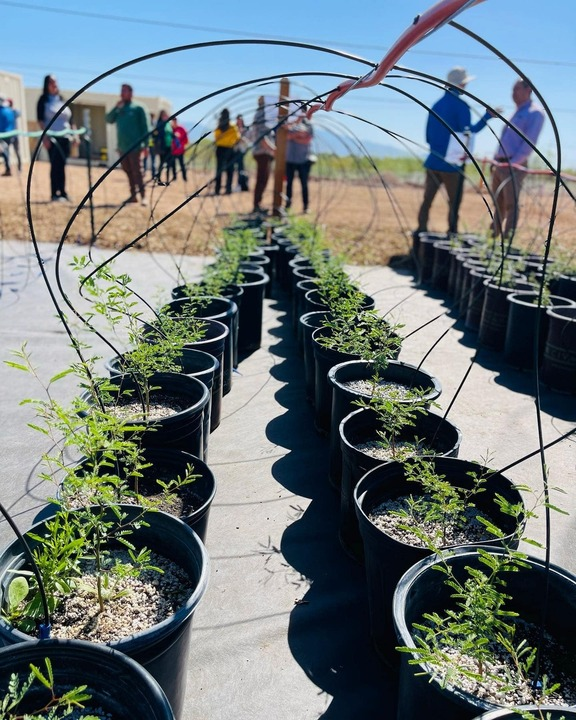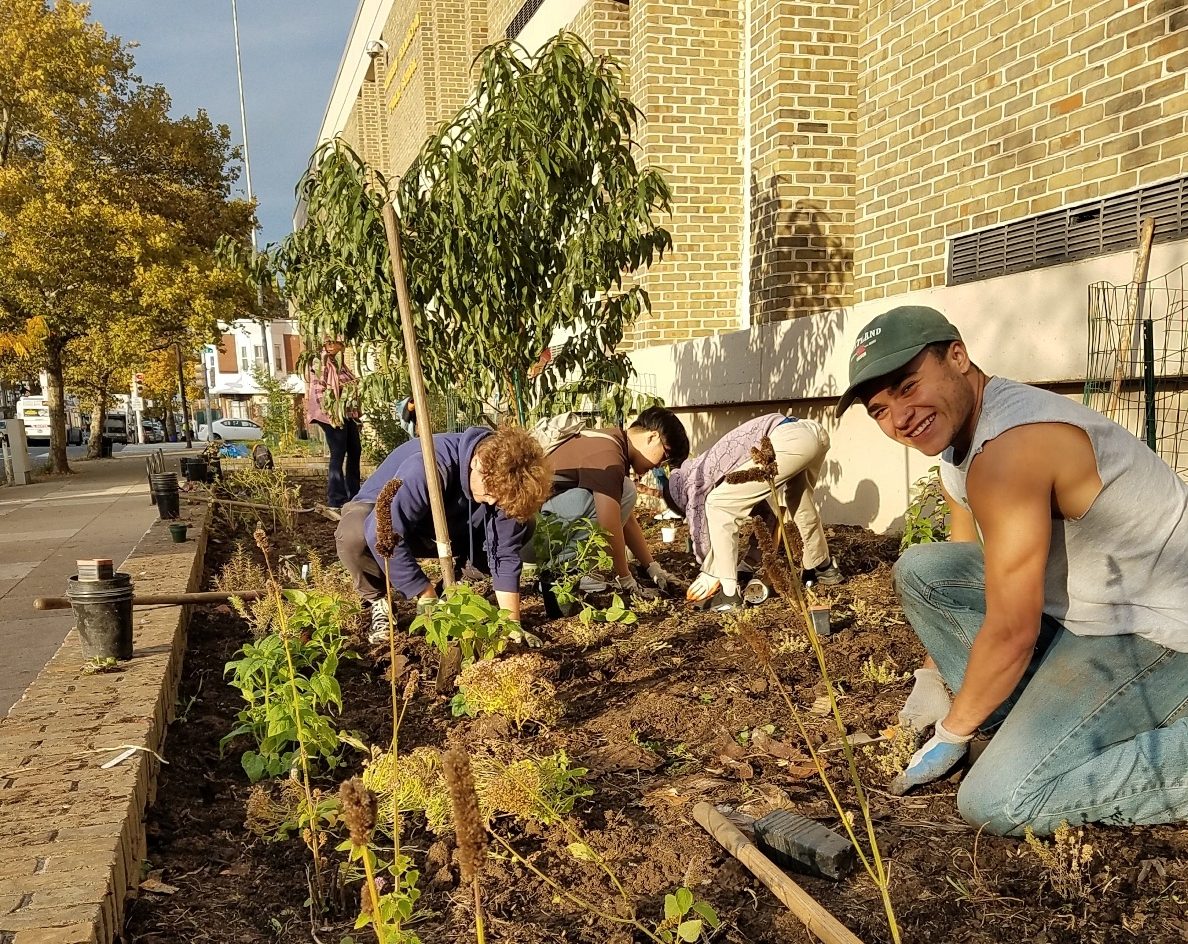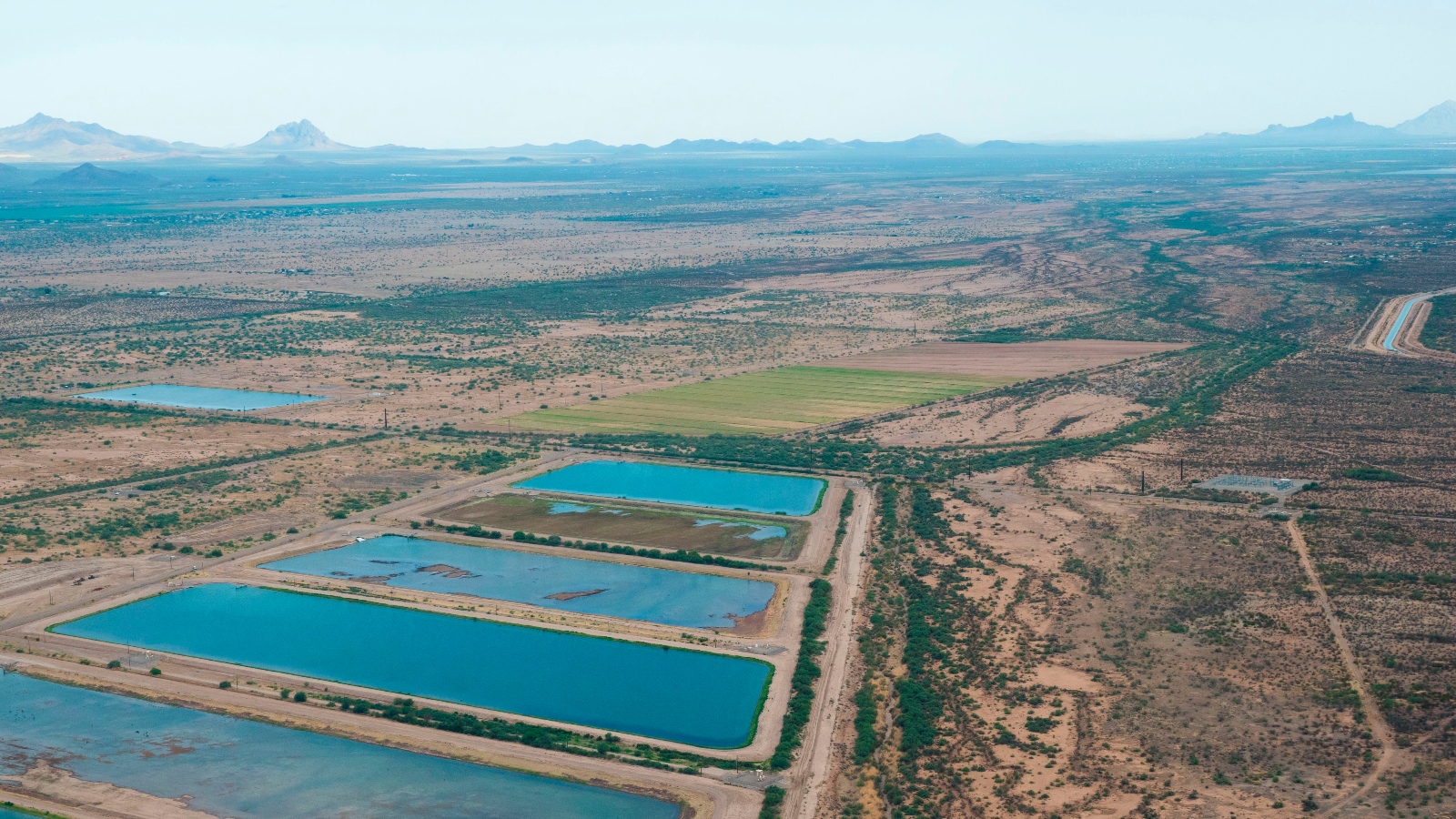This story was originally published by Inside Climate News and is reproduced here as part of the Climate Desk collaboration.
One by one, leaders from across Arizona gave speeches touting the importance of water conservation at Phoenix City Hall as they celebrated the announcement of voluntary agreements to preserve the declining Colorado River in November.
When Tao Etpison took the mic, his speech echoed those who went before him. Water is the lifeblood of existence, and users of the Colorado River Basin were one step closer to preserving the system that has helped life in the Southwest flourish. Then he brought up the elephant in the room: Arizona’s groundwater protection was lacking, and mining companies were looking to take advantage.
“The two largest foreign-based multinational mining companies in the world intend to construct the massive Resolution Copper Mine near Superior,” said Etpison, the vice chairman of the San Carlos Apache Tribe. “This mine will use, at a minimum, 775,000 acre feet of groundwater, and once the groundwater is gone, it’s gone. How can this be in the best interests of Arizona?”
The question is one the state and the Southwest must answer. Mine claims for the elements critical to the clean energy transition are piling up from Arizona to Nevada to Utah. Lithium is needed for the batteries to store wind and solar energy and power electric vehicles. Copper provides the wiring to send electricity where it will be needed to satisfy exploding demand. But water stands in the way of the transition, with drought playing into nearly every proposed renewable energy development, from solar to hydropower, as the Southwest debates what to do with every drop it has left as the region undergoes aridification due to climate change and decades of overconsumption.
Mining opponents argue the proposals could impact endangered species, tribal rights, air quality and, of course, water—both its quantity and its quality. Across the Southwest, the story of 2023 was how water users, from farmers in the Colorado River Basin to fast-growing cities in the Phoenix metropolitan area, needed to use less water, forcing changes to residential development and agricultural practices. But left out of that conversation, natural resource experts and environmentalists say, is the water used by mining operations and the amount that would be consumed by new mines.
The San Carlos Apache Tribe has fought for years to stop Resolution’s proposed mine. It would be built on top of Oak Flat, a sacred site to the Apache and other Indigenous communities, and a habitat of rare species like the endangered Arizona hedgehog cactus, which lives only in the Tonto National Forest near the town of Superior. The fate of the mine now rests with the U.S. District Court in Arizona after the grassroots group Apache Stronghold filed a lawsuit to stop it, arguing its development would violate Native people’s religious rights.
But for communities located near the mine and across the Phoenix metropolitan area, the water it would consume is just as big of an issue.
Throughout the mine’s lifespan, Resolution estimates it would use 775,000 acre feet of water—enough for at least 1.5 million Arizona households over roughly 40 years. And experts say the mine would likely need far more.
“By pumping billions of gallons of groundwater from the East Salt River Valley, this project would make Arizona’s goal for stewardship of its scarce groundwater resources unreachable,” one report commissioned by the San Carlos Apache Tribe reads. In one hydrologist’s testimony to Congress, water consumption was estimated to be 50,000 acre feet a year—about 35,000 more than the company has proposed drawing from the aquifer.
The Resolution copper mine isn’t the only water-intensive mining operation being proposed. Many of what the industry describes as “critical minerals,” like lithium and copper, are found throughout the Southwest, leading to a flurry of mining claims on the region’s federally managed public lands.
“Water is going to be scarcer in the Southwest but the mining industry is basically immune from all these issues,” said Roger Flynn, director and managing attorney at the Western Mining Action Project, which has represented tribes and environmental groups in mining-related lawsuits, including the case over Oak Flat.
‘The Lords of Yesterday’
To understand mining in the U.S., you have to start with the Mining Law of 1872.
President Ulysses S. Grant signed the bill into law as a way to continue the country’s development westward, allowing anyone to mine on federal lands for free. To do this, all one needs to do is plant four stakes into the ground where they think there are minerals and file a claim. Unlike other industries that make use of public lands—such as the oil and gas industry—no royalties are paid for the minerals extracted from the lands owned by American taxpayers.
Flynn referred to mining as the last of the “Lords of Yesterday”—a term coined by Charles Wilkinson, a long-time environmental law professor at the University of Colorado who died earlier this year—referring to the industries like oil and gas drilling, ranching and logging that were given carte blanche by the federal government to develop the West after the Civil War and push Indigenous populations off the land. All of those industry regulations have changed, Flynn said, except mining.
That’s led mining to be viewed as the top use of public lands by regulators who give it more weight than conservation or recreational activities, he said.
“You don’t have to actually demonstrate that there are any minerals in a mining claim, you don’t have to provide any evidence that there is a mineral there at all,” said John Hadder, the executive director of Great Basin Resource Watch, an environmental group based in Nevada that monitors mining claims. “You can just be suspicious—and there’s a lot of suspicion going around.”
Most of Nevada is completely reliant on groundwater, an increasingly scarce resource. Without water, companies hunting critical minerals can’t mine, Hadder said, so they look to acquire water rights from other users, typically by buying up farms and ranches, changing the economics and demographics of a community. When the mines are developed, they can impact local streams, groundwater levels and the quality of the water as toxins seep into aquifers and surface supplies over the years. Now, with the clean energy transition gaining traction, there’s a new mining boom, prompting increasing concerns over how local ecosystems will be impacted. In Nevada alone, there are more than 20,000 mining claims related to lithium, the biggest of which are, of course, drawing controversy.
Water’s role in mine fights
In northern Nevada, companies have proposed two massive lithium mines—Thacker Pass and Rhyolite Ridge—in groundwater basins that are already over appropriated. Both have drawn heavy scrutiny, the former for being proposed on a sacred site for local Indigenous tribes that is also range for area ranchers and endangered sage grouse, and the latter for threatening an endangered wildflower found nowhere else in the world.
Now, Canada-based Rover Metals is looking to drill a lithium exploration project near the Ash Meadows National Wildlife Refuge, a wetland habitat in Nevada near the California border that supports a dozen endangered and threatened species and is one of the most biodiverse places on the planet, which environmentalists call “the Galapagos of the desert.”
“Nevadans almost more than any other state have had to wrestle with the availability or lack thereof of water for development for its entire history,” said Mason Voehl, the executive director of the Amargosa Conservancy, an environmental group that has helped lead the push to protect the refuge. “This is sort of compounding that already really complex challenge.”
Opponents of the proposal successfully sued the Bureau of Land Management over its approval of the drill site without consulting other agencies about the potential impact on the groundwater supply critical for the refuge. The BLM rescinded its approval, but the company behind it is still pursuing permitting. “A huge win in this world is basically a delay,” Voehl said.
In Utah, too, companies are looking to tap into dwindling water supplies to extract lithium. Compass Minerals planned to extract lithium from the Great Salt Lake, which in recent years has hit record lows, until pushback from regulators and environmentalists caused the company to announce in November it was pausing operations, at least for now. Along the Green River, the largest tributary of the Colorado River, Australia-based Anson Resources is looking to extract lithium from brine buried deep underground. The plan to drill wells 9,000 feet deep and use Colorado River water to extract the brine drew the attention of local environmentalists and the Bureau of Reclamation, which oversees the management of the river, both of which disputed the company’s claim that their process wouldn’t reduce the amount of water available for other uses.
“We see that [the company] claimed this water is going to be nonconsumptive,” said Tyson Roper, a civil engineer with the Bureau of Reclamation, the federal agency that oversees hydropower and water in the West, at a hearing over Anson’s water right. “All the data out there says water will be consumed.”
That could have big implications for other users and water programs in the region, he said, a concern other federal agencies and environmentalists have raised as well.
“This has the potential to impact much larger operations and allocations established by not only the Green River Block Water Exchange but the Colorado River Storage project as well,” Roper said at the hearing. “The same project that provides water to 40 million people, 5.5 million acres of irrigation, 22 tribes, four recreation areas and 11 national parks.”
These and other proposed mines in the Southwest are critical pieces in U.S. efforts to puzzle together a domestic supply of critical minerals for the clean energy transition. But the mining projects also pose what many view as not only another serious burden on dwindling water supplies in the Southwest, but one that doesn’t face the same scrutiny that other major water users face. To some, the water for mines highlights a tension between the impacts and solutions of climate change as farmers and cities across the region are asked to accept dramatic cuts to their water supplies in the rapidly drying region, and clean energy developers endeavor to exponentially increase the amount the Southwest’s abundant solar and wind resources they harvest.
This story was originally published by Grist with the headline Is the Southwest too dry for a mining boom? on Jan 28, 2024.







